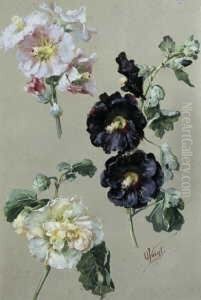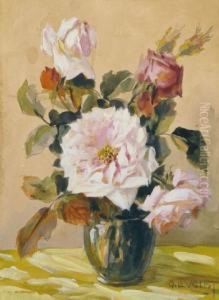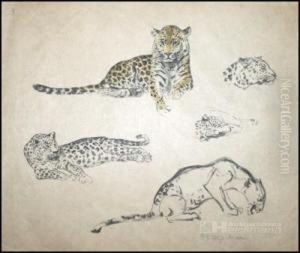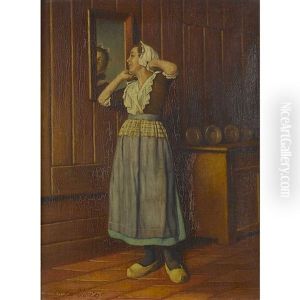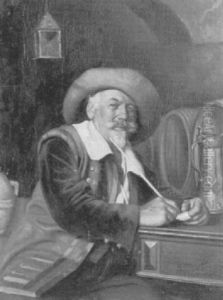Otto Eduard Voigt Paintings
Otto Eduard Voigt was a German artist, born in 1870 in Meerane, Saxony, and died in 1949. His work spans a crucial period in German art, bridging the late 19th century and the tumultuous first half of the 20th century. Voigt's artistic journey reflects the broader movements of his time, from the detailed realism popular in his youth to elements of Expressionism and Art Nouveau that emerged later. Despite not being as widely recognized as some of his contemporaries, Voigt's contributions to German art, particularly in printmaking and illustration, are noteworthy.
Voigt's early career was marked by a traditional approach to art, focusing on landscapes and portraits with a keen attention to detail and the interplay of light and shadow. His education, likely at one of the prominent art academies in Germany, would have grounded him in the techniques and artistic values of the time. As the 20th century dawned, Voigt, like many artists of his era, found himself influenced by the changing artistic landscapes in Europe. The rise of Expressionism in Germany, with its emphasis on emotional expression over realistic representation, can be seen in the evolution of Voigt's style.
During World War I, Voigt's work, like that of many of his peers, was impacted by the national mood and the horrors of the conflict. His later works often reflected a more introspective and sometimes darker tone, exploring themes of human suffering and resilience. After the war, amidst the Weimar Republic's cultural flourish, Voigt's work diversified. He embraced printmaking, producing etchings and lithographs that captured both the vibrancy and the anxiety of the interwar period in Germany.
Voigt's work during the Nazi regime and World War II is less documented, as is the case with many artists who worked during this period. However, his survival through these years and continuation to create art speaks to a level of adaptability and resilience. After the war, Germany's division into East and West likely affected Voigt's career, as it did for many artists whose movements and opportunities became constrained by political boundaries.
Otto Eduard Voigt's death in 1949 came just as Germany was beginning to recover from the war and as the art world was entering a new phase of experimentation and exploration. His legacy, though not as prominent as some of his contemporaries, offers a fascinating glimpse into the transitions and turmoils of German art from the late 19th century through the first half of the 20th century. Voigt's body of work, from his early landscapes to his later, more expressionist prints, captures the spirit of a nation and an art world in constant flux.
